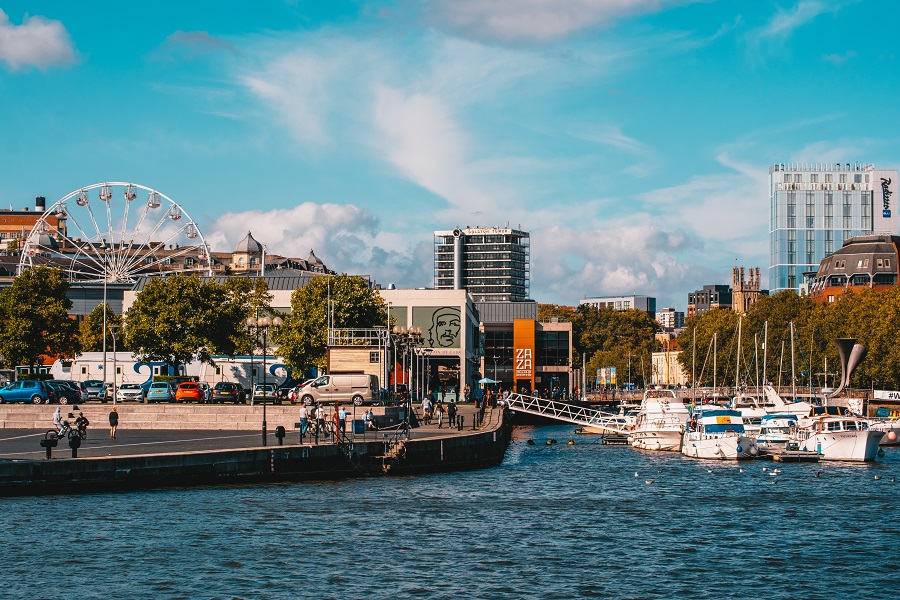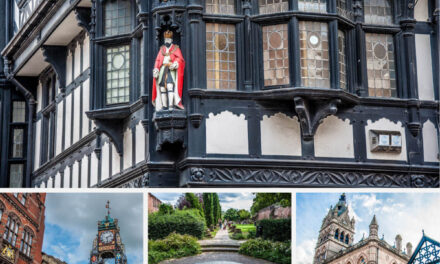Bristol
I spent about three years in the 1980s in Bristol when I was a student at Bristol Polytechnic. Unfortunately, I did not complete my degree course due to illness, and sadly, this also meant I was not in a state to appreciate fully the wonderful city of Bristol. However, this article has given me the opportunity to take another more objective look at the city.
Bristol is a city and county in the South West of England and has a population of about 463,400. It lies between Gloucestershire to the north and Somerset to the south and South Wales is located across the Severn estuary. Today, the city has a modern economy which is centred around electronics, aerospace industries and the media but in the past, it had strong links to the slave trade – on the 7th of June 2020, a statue of British Slave Trader Edward Colston was pulled from its plinth by protestors and thrown into Bristol Harbour. It was recovered four days later and will now become a museum exhibit.
The name ‘Bristol’ dates to the beginning of the 11th century to a settlement known as Bryegstow which in Old English means “the place at the bridge”.
The city’s history is indeed very colourful and deserves to be briefly looked at here. The discovery of flint tools, dating back 300,000 to 126,000 years, indicates the presence of Neanderthals in the area. The remains of two Iron Age hill settlements, two Roman settlements, Roman villas and small forts have also been found in the location.
In the Middle Ages, Bristol had a mint producing silver pennies bearing its name, and under Norman rule, it had one of the sturdiest castles in southern England. By the 12th century, it had become a major port, handling much of England’s trade with Ireland, including slaves. In the late 12th century to late 13th century, it also had a thriving Jewish community before it was expelled from England.
By the 14th century, Bristol had become an important manufacturing and shipbuilding centre and was one of England’s major medieval towns after London. But significantly, the Black Death (1348 – 49) wiped out much of Bristol’s population leaving it with a population of only between 10,000 and 12,000.
Importantly, during the first part of the 16th century, Bristol’s merchants formed a commercial organisation called “The Company Adventurers to the New Found Land” and undertook a series of exploration voyages to North America. During this time, much effort was made to develop trade with Spain and its American colonies which included the smuggling of prohibited goods such as food and guns during the Anglo-Spanish War (1585 – 1604). It is also worth a mention that during the English Civil War, the city was occupied by Royalists.
In the 18th century, Bristol’s increase in the Atlantic trade meant that it, and Liverpool, became deeply involved in what is known as the Triangular Trade i.e., manufacturing goods were exchanged for slaves in West Africa which were then transported across the Atlantic to the Americas. Plantation goods such as tobacco, rum, rice, sugar and some slaves were then transported back across the Atlantic to England. Bristol was a major supplier of slaves to South Carolina before 1750. The slave trade was abolished in the UK until 1807 following the intense efforts of campaigners like William Wilberforce and, to some extent, John Wesley who had founded the first Methodist Chapel in Bristol in 1739.
In the 19th century, the Victorian engineer Isambard Kingdom Brunel had a huge influence on Bristol, as he designed the Clifton Suspension Bridge, two Bristol-built ocean-going steamships, and also the Great Western Railway between Bristol and London Paddington. At this time, traditional industries involving copper and brass diminished whilst the importation of tobacco increased. The population of Bristol vastly increased and in 1901 was 330,000.
The twentieth century saw the emergence of the aerospace industry and the financial service sector in Bristol, and it now also relies heavily on them and defence, information technology, media and tourism for employment. Interestingly, the population for the city peaked at 428,089 in 1971. It is ironic that the Luftwaffe killed 1,300 people and damaged 100,000 buildings during the Second World War.
Bristol city centre was rebuilt in the 1960s and 70s when skyscrapers were erected and roads like the M4 and M5 were constructed and connected Bristol to London and other major UK cities. A £500 million shopping centre, Cabot Circus, was opened in 2008 and The Bristol Temple Quarter Zone was opened around Bristol Temple Meads Railway Station in 2012. Although importing tobacco has ceased, there is still a healthy import business of wine and spirits.
Modern Bristol is steeped in culture and actually possesses 51 Grade I buildings, theatres such as The Theatre Royal and The British Old Vic, as well as many music and sporting venues. It has the British Museum and Art Gallery and also the Watershed Media Centre and Arnolfini Gallery.
If sport is your thing, you could normally go and watch football teams like Bristol City and Bristol Rovers, Bristol Bears RUFC or maybe go to Gloucestershire County Cricket Club. There is so much to see and do in the city.
Education-wise, there are two universities in the city and many other places of learning including several leading independent schools.
I would like to visit Bristol again when it is appropriate to do so, and this will not be difficult as it is well-served by road, rail and air.
Interestingly, Bristol is twinned with the following places:
Porto, Portugal
Hanover, Germany
Bordeaux, France
Tbilisi, Georgia
Beira, Mozambique
Puerto Morazán, Nicaragua
* With a lot of help from Wikipedia
Read more of Dean’s Places here:
fromthehorsesmouth.org.uk/category/deans-places
Bristol was featured first in FTHM Edition 74




Recent Comments